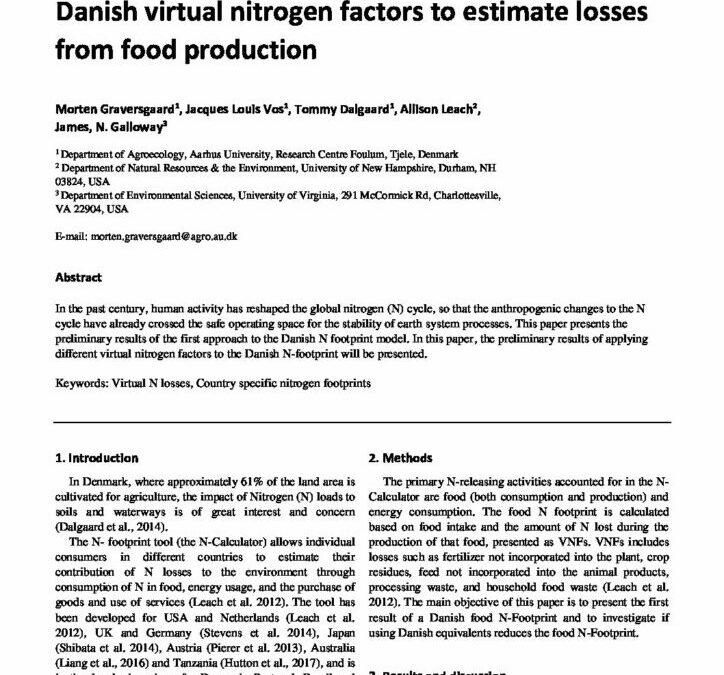The nitrogen footprint of Denmark – Applying Danish virtual nitrogen factors to estimate losses from food production

In the past century, human activity has reshaped the global nitrogen (N) cycle, so that the anthropogenic changes to the N cycle have already crossed the safe operating space for the stability of earth system processes. This paper presents the preliminary results of the first approach to the Danish N footprint model. In this paper, the preliminary results of applying different virtual nitrogen factors to the Danish N-footprint will be presented.
In Denmark, where approximately 61% of the land area is cultivated for agriculture, the impact of Nitrogen (N) loads to soils and waterways is of great interest and concern (Dalgaard et al., 2014). The N- footprint tool (the N-Calculator) allows individual consumers in different countries to estimate their contribution of N losses to the environment through consumption of N in food, energy usage, and the purchase of goods and use of services (Leach et al. 2012). The tool has been developed for USA and Netherlands (Leach et al. 2012), UK and Germany (Stevens et al. 2014), Japan (Shibata et al. 2014), Austria (Pierer et al. 2013), Australia (Liang et al., 2016) and Tanzania (Hutton et al., 2017), and is in the developing phase for Denmark, Portugal, Brazil and Ukraine. In this paper we present the first, preliminary Danish N-footprint based on Danish Virtual Nitrogen Factors (VNF).
